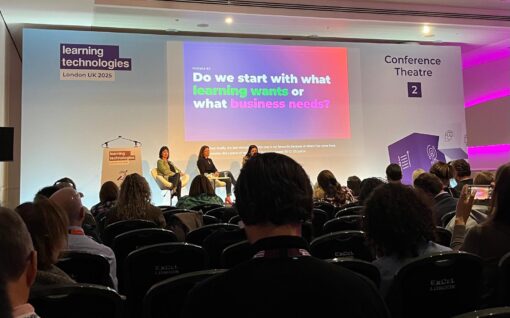What L&D can learn from internal comms
Marketing learning is a hot topic in the industry, making this State of the Sector 2023/24 report from Gallagher worth a look. The research shares results of a survey of more than 2,000 internal comms professionals carried out at the end of 2023. But why should L&D people be interested in a report about internal comms?, you might ask. Well, if you are lucky enough to work in an organisation that has an internal comms function then they will be – or should be – one of your key stakeholders. They hold the keys to internal comms and have an important role to play in supporting the employee experience.
And a lot of marketing is concerned with communication. So these people are important to you. But the research suggests your interests are not as important to them. Take a look at the success indicators – L&D participation is pretty far down the list, as are employee retention and internal mobility.
- Employee engagement 74%
- Strategy awareness 70%
- Behaviour change 49%
- Digital reach 46%
- Policy compliance 34%
- L&D participation 26%
- Employee retention 24%
- Employee advocacy 21%
- Internal mobility 10%
- Candidate attraction 9%
And in a list of the most-communicated topics, career development came 15th out of 16 topics.
The research also looked at how internal comms professionals communicate across topics – on a scale of strategic, advisory or supporting. Around 50% of respondents said they operated at a strategic level on strategy, employee recognition and values and culture. For career development only 17% operate at a strategic level, with 46% working at an advisory level and 37% at a supporting level.
The research is unequivocal in its message to learning functions: comms around career development, internal mobility and retention – all critical to upskilling and reskilling and driving the skills agenda – are not priority topics for communication and are not strategic priorities. This is why learning has to move up the strategic agenda. The learning team has to have the clout to influence comms stakeholders. This is actually you might expect to already be happening, considering many internal comms functions sit in the HR team.
The research also provides some useful insights on the effectiveness of internal comms channels and people managers’ communication abilities.
For instance, insights around employee listening channels – the channels that are perceived as the most useful aren’t necessarily the most well used.
The most effective channels are listening sessions, leader sessions and an independent audit, followed by live Q&As and engagement surveys. But listening sessions have 40% usage, leader sessions 34% and independent audit 8%. There’s a lesson here for L&D – do you know the best listening and feedback channels to use in your organisation? And are you using them?
The research also provides some useful insights on another employee population that has a big impact on the success or otherwise of learning – people managers. The data shows that 84% of internal comms professionals rely on managers for communication to some degree but 3 in 5 say managers’ communication is below par.
So if comms are a challenge for internal comms professionals then comms are likely to be an even bigger challenge for L&D. That’s a tactical level issue. More worrying is the lack of strategic impact for internal comms professionals.
And the same can be said for L&D. CEO research, such as this piece from McKinsey, shows that skills are at the heart of the big challenges keeping CEOs awake in 2024. So how is it that L&D’s message is not having an impact at a strategic level?
Clearly there are lessons to be learned here both at a tactical comms level and at a strategic level. Getting the strategic buy-in and support for the L&D agenda (and its impact and value to the business) will enable L&D teams to develop more strategic comms that will drive engagement across the organisation.
Picture credit: Andrea Piacquadio

